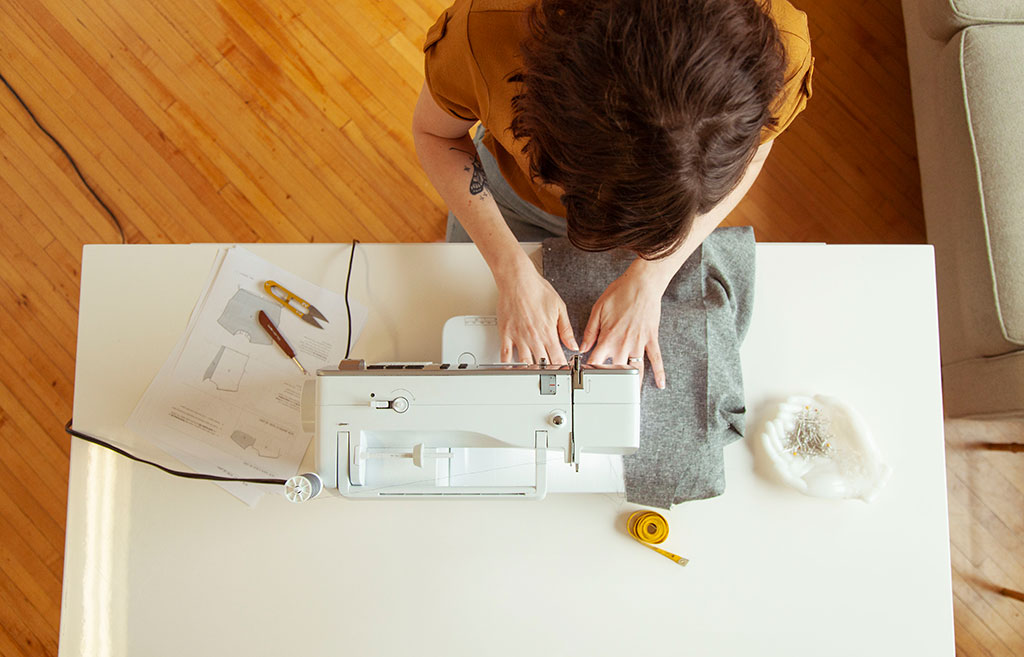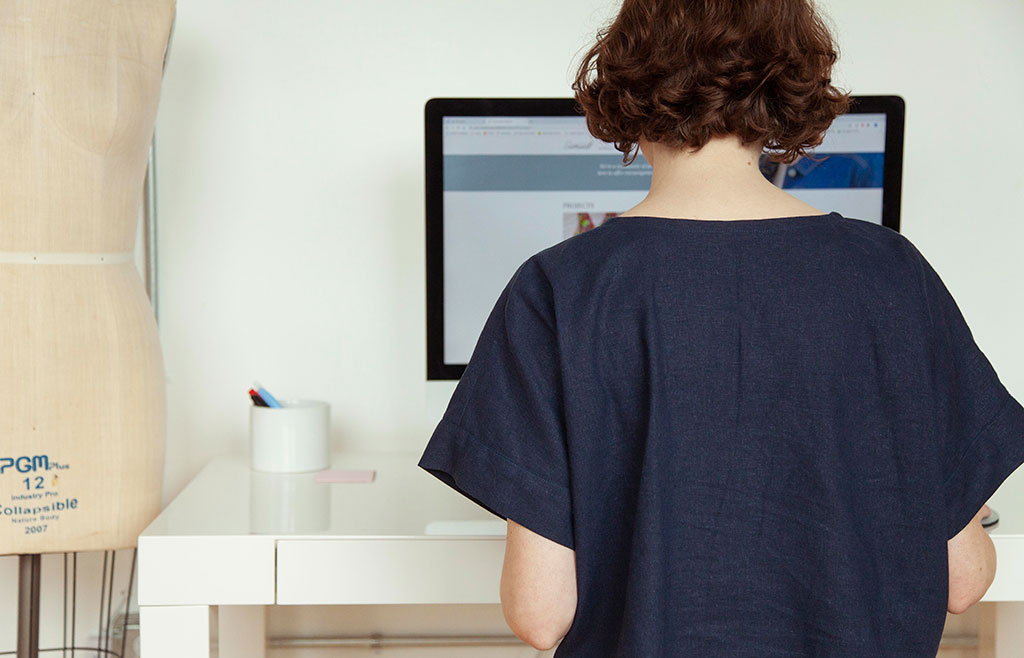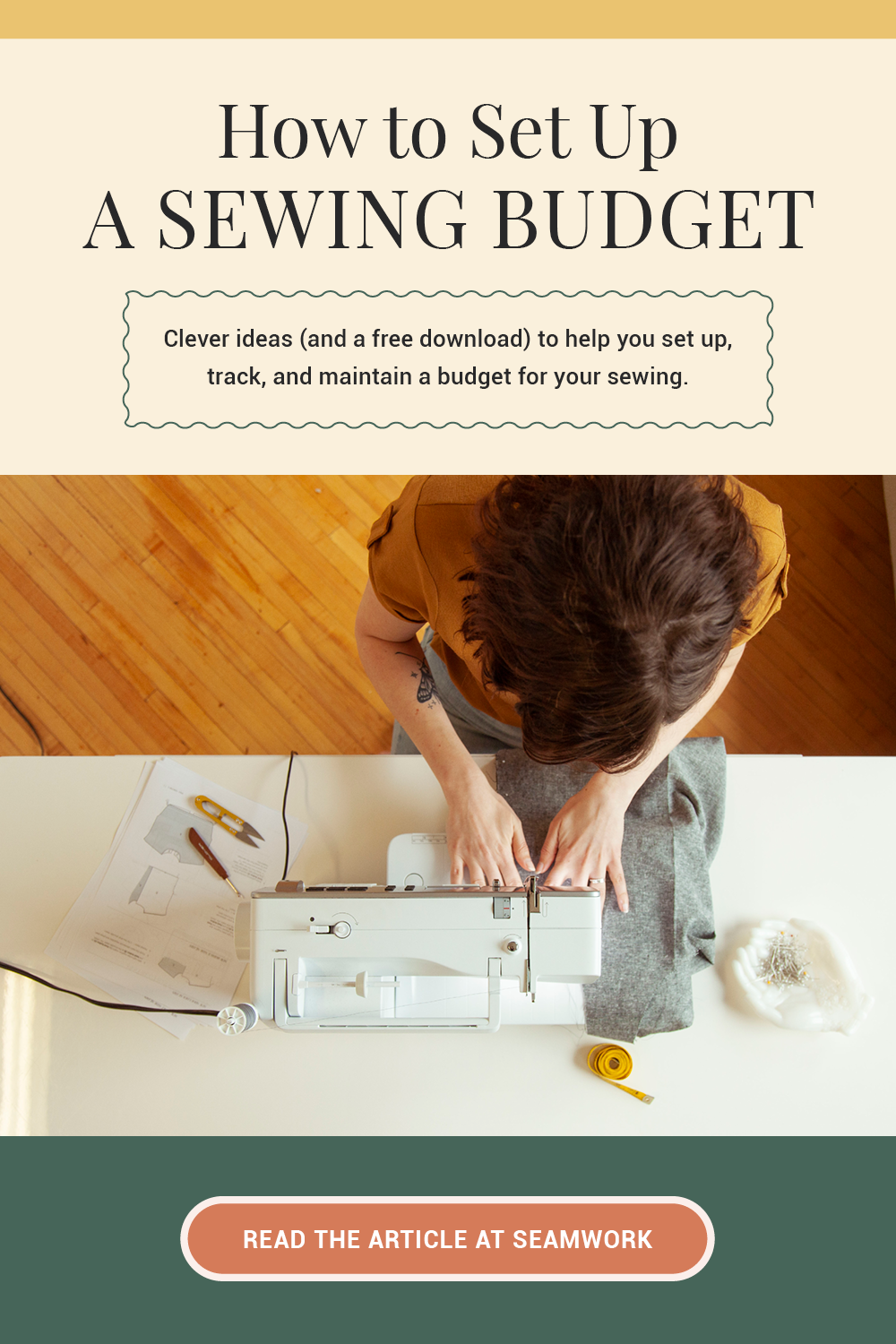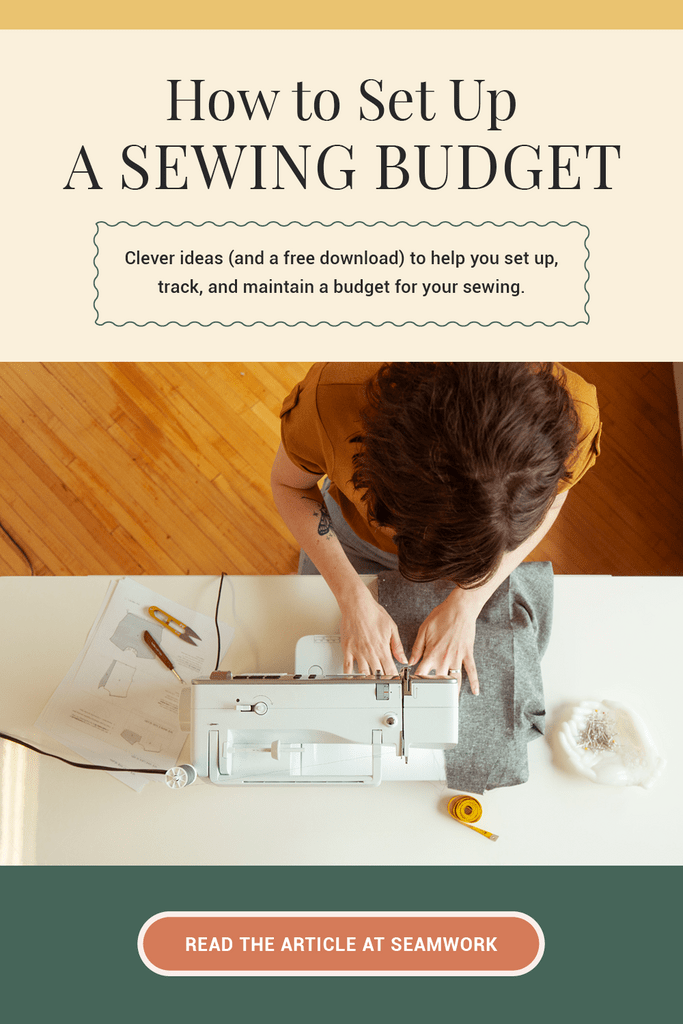You probably don’t like thinking about money when you sew. It’s not fun to fall in love with an unaffordable fabric, and it hurts a little to feel like you can’t add more tools to your sewing space when money is tight. So, it might be hard to think about setting a budget for sewing. Creativity is priceless, right?
Besides, how much should you even budget for something that you love to do? You can look to general budgeting resources for ideas. Senator Elizabeth Warren and her daughter co-authored a book on personal finance that proposes the 50/20/30 rule. You spend 50% of your income on essentials, put 20% into savings, and use 30% for everything else, including sewing.
If you really want a number to start with, Forbes suggests limiting your hobby spending to 10% of your take-home pay, which can give you a place to start.
We’re all going to approach budgeting a little differently, so here are some ideas to help you set up a sewing budget that works for your spending habits. We asked our community to take a survey about their budgeting practices, and based on your responses, we made a free, downloadable Seamwork Sewing Budget Worksheet. It has helpful spreadsheets and calculators that will help you start your own sewing budget—formatted for both Excel and Numbers (which you can print if you want to go analog). Use these worksheets along with this article, and you’ll be all set.

3 Quick Steps to Set Up A Sewing Budget
To start budgeting sewing projects, first determine how much of your take-home pay you can spend on this hobby. If you want to go all-in on sewing, just use the 10% rule. Figure out 10% of your at-home pay, divide it by 12, and there is your monthly budget.
You can work with this monthly budget or set specific budgets based on your average cost per project and your sewing goals.
Step 1: Track your spending—or go back through receipts—for at least 3 or 4 projects. This gives you a sense of your average spending. Some projects might be cheaper or more expensive than others, so you can work with a few different averages if that’s easier.
Our free downloadable sewing budget worksheets include a tracker so you can enter your spending and see a breakdown of where your money is going in a helpful little pie chart.
Step 2: Set a sewing goal with a defined timeline. You could set a goal to budget for two projects a month, budget for all your Design Your Wardrobe plans, or budget for a specific outfit.
The worksheet download includes a worksheet for a single project’s budget and a larger project with multiple garments.
Step 3: If you know exactly what you want to make, estimate the cost of the upcoming projects in your queue. Start with shopping your stash and then determine what you need to buy. Divide your expenses by the timeline you set in your goal. For example, your goal might be to sew three garments in the next month, so that total will be your monthly cost. Or, if you plan to sew six garments over a season, divide the total cost by three to get a monthly cost.
If you don’t know what you want to make, but you want to budget for a certain number of projects that month, work with your project average and select projects that fit the budget.
No matter what, before you estimate how much you will need to spend, shop your stash first!
In the budget worksheet download, you’ll find space to enter items (and their estimated cost) from your stash, along with some helpful calculators, like a cost-per-use calculator, a project-average calculator, and a calculator for tallying multiple projects at once.
More Tips for Budgeting Your Sewing
Since we’re all going to have slight differences in our budgeting, here is some helpful advice and troubleshooting. Take what works for you and leave the rest!
What to do if you aren’t sticking to your budget
If you are always going over, maybe your average estimates should be higher (or you should be shopping your stash more). If you are always under budget, set that extra money aside in a special sewing savings account for the next time you need to make a big purchase.
Are you having trouble tracking your spending? Save your receipts in an app or take screenshots and put them in a folder on your computer. Go through these every three months to see if you need to make adjustments.

It helps to merge budgets
Your sewing budget can also be a part of your clothing budget—don’t forget that the more you sew, the less you need to shop for clothing.
You can also integrate your sewing budgeting into your entertainment budget. Sewing is just as enjoyable as going to a movie or going out to dinner. So if it helps, allot some of your entertainment budget towards it. In other words, treat yourself.
Or you can integrate sewing into your wellness budget. Hobbies are self-care for many of us—and science backs the power of creative flow to help with mental health and stress-relief.
Budgeting details are tricky (but you can make them fun)
If you’re struggling to budget bigger expenses—like a new sewing machine or a book of patterns—do a quick cost-per-use calculation. Just divide the total cost by the (estimated) number of times you anticipate using the pattern, tool, or equipment in the next month or year. This can help shrink the initial cost into a more realistic perspective—or it will help you realize that you are not ready for that purchase yet.
You can even calculate a cost-per-wear for your patterns to see if it’s worth grabbing that new release! Remember, there’s a calculator in our downloadable budget worksheets.
When you want to expand your budgeting skills, you can start tracking if you prefer to sew many projects using cheaper materials or fewer projects with high-quality materials. It can help to save your finished project budgets. Review them each season to see which garments you wore the most and how much they cost.
But does budgeting really make a difference?
If you’re wondering whether or not it pays off to spend time tracking your expenses and maintaining a budget spreadsheet, don’t worry, it does. Tracking a few months of sewing expenses will make you more aware of your spending. So even if you only fill out the simple project budget sheet in this download, it will change the way you fabric shop and how you treat your stash in the future.
If you need some tips for sewing on a budget or you want to nerd out with even more involved budgeting techniques, head over to the Community to catch up with other makers around the world.
Now you’re ready to budget! All you have to do is download the Seamwork Sewing Budget Worksheet for helpful spreadsheets and calculators that will help you start your own sewing budget—in both Excel and Numbers format (which you can print if you want to go analog).
Love the article? Pin it for later.







